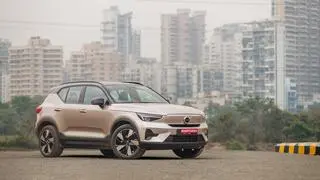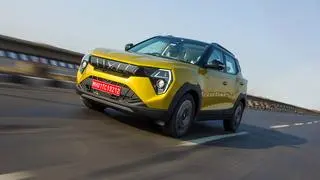The new, third-generation Hyundai i20 has been launched rather late into what is already a tough year for the auto industry. The i20 has made it in the nick of time for the festive season.
Though it is unlikely to contribute significantly to sales volumes this year due to the pandemic or otherwise, its launch is still an indicator of how keen Hyundai is in getting its product strategy right for the Indian market.
The i20 is a key model for Hyundai because it acts as a bridge between entry hatchback models and the premium sedan offerings higher up in the price segment. It is also a model that sits at a position in the model line-up where it is the perfect upgrade for small car owners to consider despite the surfeit of new sub-compact SUVs.
So, is the new i20 a worthy successor to the exceptionally good outgoing model?
Design
More than one lakh units of the Elite i20 were sold annually over the last six years.
The new, third-gen model needs to deliver a better experience to outdo the predecessor. Seeing it in the flesh and getting behind the wheel gives one a different perspective compared to the pictures.
Let’s start with its design. The previous-gen i20 was pleasing to the eye with a rounded design that was liked by everyone. The new model is likely to find a few detractors, though they may find it equally appealing after getting acquainted with the design. It is certainly not as polarising as the new Creta’s design. The new i20 is slightly larger (about 40mm wider), which is why its side profile looks similar. Viewed up straight, the sharper lines running over the bonnet, and the angular cuts and shapes in the front fender give the new model a brand new character.
The frameless black grille and the large wraparound headlamps are the most defining features of the front and there is more than a hint of similarity with Hyundai sedans of recent years. All the chrome garnishes missing from the front get loaded on to the side and rear. Door handles, the ‘flyback’ belt-line that highlights the window line and the garnish that connects the two tail-lamps at the rear are all finished in polished chrome.
The tail-lamps themselves feature Z-shaped LED tubes that give the new i20 a distinct night-time signature. The wedge-shaped tail-lamps cut deep into the side panels and, along with the chrome connector, enhance the perception of width at the rear. The tailgate features chiselled, layered sections, but the boot opening itself seems almost identical to the outgoing model. This also means that the loading lip is set relatively high and the access to the 311-litre boot is a bit narrow. Rear glass features moulded appliqué on either side with fins to improve aerodynamics. The chunky rear fender features a glossy black faux diffuser.
Cabin
The new i20’s interior is simple and elegant in its choice of symmetry in design and layout. There is a clear horizontal orientation to many of the elements in the cabin, starting with the ‘slatted’ panel that stretches across the entire dashboard and which houses the aircon vents. The dashboard itself juts into the door panel and boosts the ‘visual width’ of the cabin. The slatted theme runs into the door panels and even to the seats. My test mule featured leather seats with red double stitching and piping. Other controls also get red accents, like the aircon vent adjusters, door panel handles and steering controls. Centre stack controls are minimalist with good quality switches bunched together for the auto climate control. There are two screens — one is the 26cm touchscreen infotainment system and the other is the digital instrument cluster. Both are connected and set into a single binnacle; Hyundai calls them optically linked.
The instrument cluster with its multi-info display in the centre, like the steering wheel, is similar in configuration and build to those in newer Hyundai vehicles. This also means that you’ll have to get used to the reverse orientation of the rpm-meter.
The new i20’s cabin is spacious and has enough headroom and legroom even for tall passengers, importantly even at the rear seat. The all-black colour theme of my test mule may not be liked by everyone. Similarly, the quality of the materials used in the cabin is good overall, but there are small plastic panels which I felt could have been better finished.
But, Hyundai has ensured that it has stuffed the third-gen i20 with features that are currently available only in models higher up in the price range. Features like connected car tech, wireless phone charger, a 7-speaker Bose sound system, Hill Assist, multi-phone Bluetooth connectivity, blue ambient cabin lighting, etc., deliver that bit of novelty needed to make it stand out in the premium hatch segment.
Performance
Hyundai is going to keep a diesel engine in the mix for the new i20. So, while it gets the 1.2-litre Kappa and the one-litre Kappa Turbo GDi petrol engines, it also gets the 1.5-litre U2 CRDi diesel engine. All the engines are BS6 compliant and like in the Venue, the one-litre petrol is paired with a choice of two transmissions — the 7-speed DCT or intelligent manual transmission (iMT). The 1.2-L petrol can be specified with either the 5-speed manual or IVT (intelligent variable transmission). And the diesel 1.5L gets a 6-speed manual.
My test car was the one-litre turbo petrol with the 7DCT (dual clutch) auto gearbox. This is a powertrain that has been tuned and honed into a very likeable combo in the Venue and other Hyundai and sister brand Kia vehicles. The engine offers a wide midrange power band that makes it easy to use in most conditions. The dual clutch transmission makes quick progress on the road easy with imperceptible shifts and good throttle response.
Yet, it is still not the quickest DCT out there. Of course, sports mode delivers a performance that is more akin to my expectations. However, my quibble with this powertrain is the vibration and very audible thrum from the 3-cylinder. The vibrations during idling both at the wheel and the door are mild and even out when the new i20 gets going. But this is a model in which the engines of the past have been whisper quiet and have been barely noticeable during idling.
The 998cc engine delivers 120PS of peak power at a high 6,000rpm, but peak torque of 172Nm is delivered from a low 1,500rpm. The new i20 has been built on Hyundai’s new K platform and is said to be lighter than the predecessor due to increased use of advanced high strength steels. But, on-road performance is not as peppy as those numbers might suggest. Some of that could possibly be attributed to the gear ratios getting an efficiency tilt. The ARAI rated mileage for the one-litre turbo DCT combo is 20.25kmpl.
Bottom line
The new i20’s ride quality is a key metric, particularly because the predecessor was so well-known for its family-sedan-like comfort at the rear seat. The new model matches it in most conditions, except when being driven over really bad quality tarmac when the slightly firmer suspension can make the ride a bit harsh. Handling has improved compared to the previous gen, though it is still not the best in segment.
What you’ll get in the new i20 is a host of new safety features (including 6 airbags for top-trim) and a significant upgrade from the predecessor in terms of the amount of equipment in the car. Features like puddle lamps, tyre pressure monitoring, electric sunroof, air purifier and BlueLink tech, are likely to put competitors in a bind.
But, with prices starting from ₹6.8 lakh and going all the way up to ₹11.2 lakh, the new model is not exactly aggressively priced. Finally, its real competitors are going to be sub-compact SUVs, which seem to be the rage amongst buyers right now.







Comments
Comments have to be in English, and in full sentences. They cannot be abusive or personal. Please abide by our community guidelines for posting your comments.
We have migrated to a new commenting platform. If you are already a registered user of TheHindu Businessline and logged in, you may continue to engage with our articles. If you do not have an account please register and login to post comments. Users can access their older comments by logging into their accounts on Vuukle.